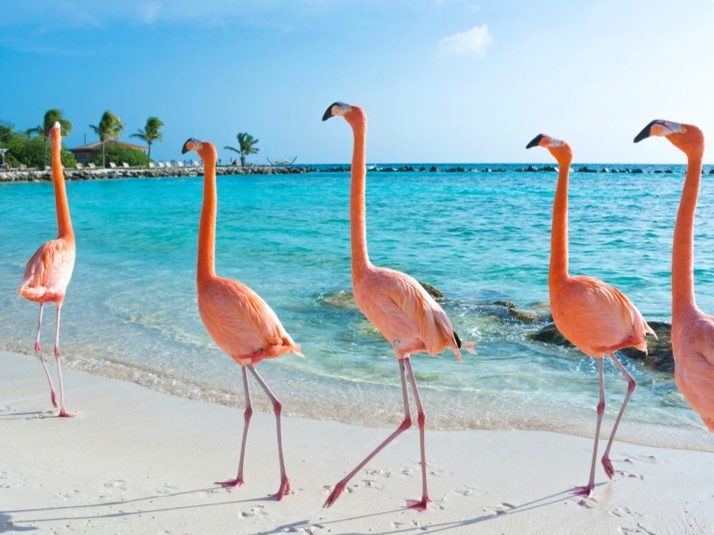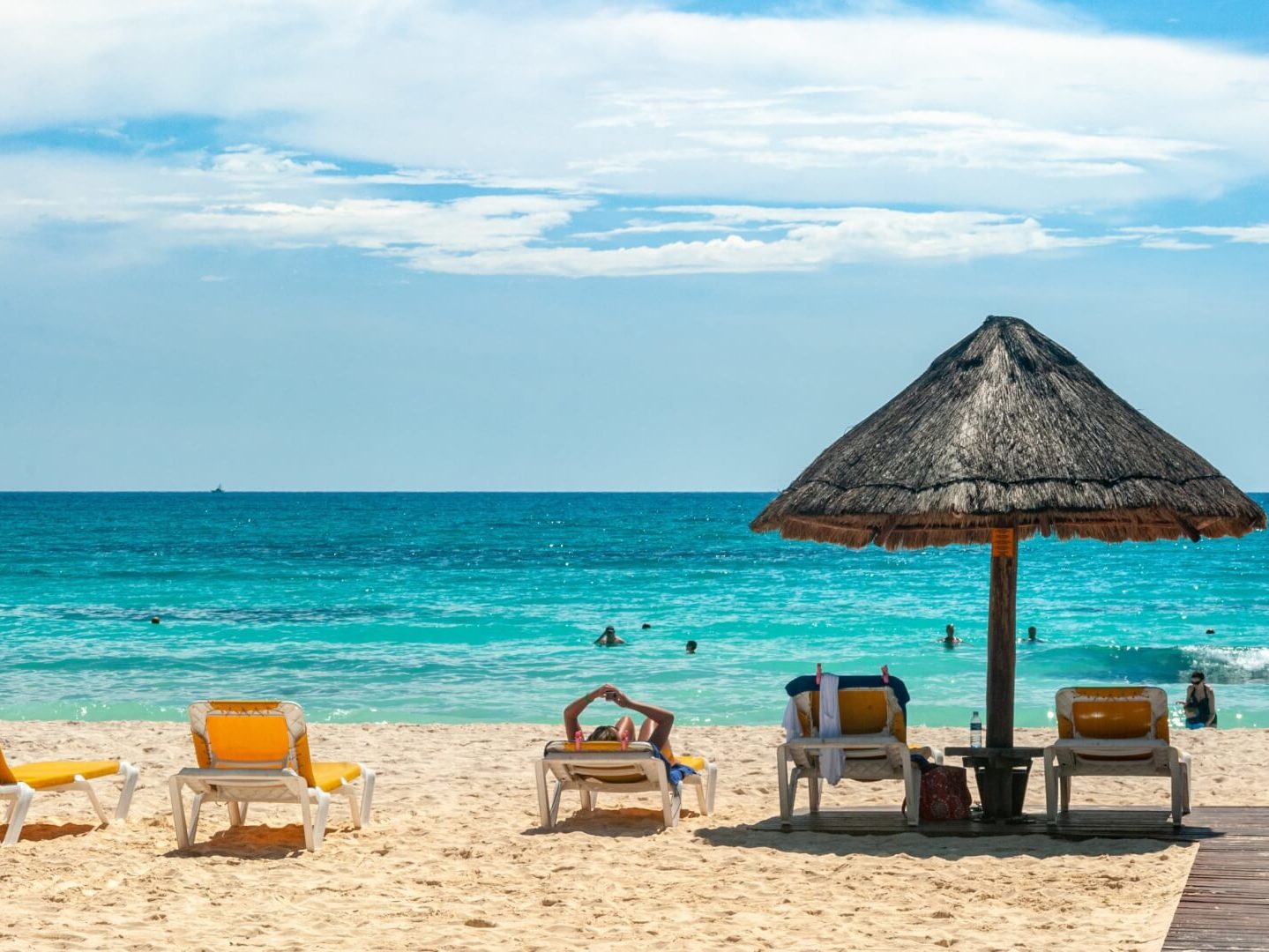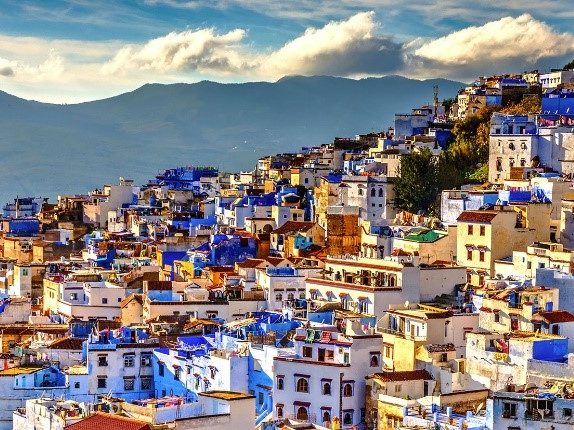Orlando
Oorlando is a city in the U.S. state of Florida and is the county seat of Orange County. In Central Florida, it is the center of the Orlando metropolitan area, which had a population of 2,509,831, according to U.S. Census Bureau figures released in July 2017, making it the 23rd-largest metropolitan area in the United States, the sixth-largest metropolitan area in the Southern United States, and the third-largest metropolitan area in Florida behind Miami and Tampa. Orlando had a population of 307,573 in the 2020 census, making it the 67th-largest city in the United States, the fourth-largest city in Florida, and the state’s largest inland city.
The City of Orlando is nicknamed “the City Beautiful”, and its symbol is the Linton E. Allen Memorial Fountain, commonly referred to as simply the “Lake Eola fountain” at Lake Eola Park. The Orlando International Airport (MCO) is the 13th-busiest airport in the United States and the 29th-busiest in the world.
Etymology
Fort Gatlin, as the Orlando area was once known, was established at what is now just south of the city limits by the 4th U.S. Artillery under the command of Ltc. Alexander C. W. Fanning on November 9, 1838, during the construction of a series of fortified encampments across Florida during the Second Seminole War. The fort and surrounding area were named for John S. Gatlin, an Army physician who was killed in Dade’s Massacre on December 28, 1835. The site of construction for Fort Gatlin, a defensible position with fresh water between three small lakes, was likely chosen because the location was on a main trail and is less than 250 yards from a nearby Council Oak tree, where Native Americans had traditionally met. King Phillip and Coacoochee frequented this area and the tree was alleged to be the place where the previous 1835 ambush that had killed over 100 soldiers had been planned. When the U.S. military abandoned the fort in 1839, the surrounding community was built up by settlers.
Orlando Reeves
Historians agree that likely no soldier was named Orlando Reeves. Folklore is that Reeves was acting as a sentinel for a company of soldiers that had set up camp for the night on the banks of Sandy Beach Lake. Several different lakes are mentioned in the various versions, as no soldiers were in what is now downtown during 1835.
The legend grew throughout the early 1900s, particularly with local historian Olive Brumbaugh (or Kena Fries[18][verification needed]) retelling in various writings and on local radio station WDBO in 1929. Another historian, Eldon H. Gore, promoted the Reeves legend in History of Orlando published in 1949. A memorial beside Lake Eola – originally placed by students of Orlando’s Cherokee Junior School in 1939 and updated in 1990 – designates the spot where the city’s supposed namesake fell.
Geography and Cityscape
The geography of Orlando is mostly wetlands, consisting of many lakes and swamps. The terrain is generally flat, making the land fairly low and wet. The area is dotted with hundreds of lakes, the largest of which is Lake Apopka. Central Florida’s bedrock is mostly limestone and very porous; the Orlando area is susceptible to sinkholes. Probably the most famous incident involving a sinkhole happened in 1981 in Winter Park, a city immediately north of downtown Orlando, dubbed “The Winter Park Sinkhole”.
There are 115 neighborhoods within the city limits and many unincorporated communities. Orlando’s city limits resemble a checkerboard, with pockets of unincorporated Orange County surrounded by city limits. Such an arrangement results in some areas being served by both Orange County and the City of Orlando. This also explains Orlando’s relatively low city population when compared to its metropolitan population. The city and county are working together in an effort to “round-out” the city limits with Orlando annexing portions of land already bordering the city limits.
Climate
According to the Köppen climate classification, Orlando has a humid subtropical climate (Cfa) like much of the deep Southern United States. The two basic seasons in Orlando are a hot and rainy season, lasting from May until late October (roughly coinciding with the Atlantic hurricane season), and a warm and dry season from November through April. The area’s warm and humid climate is caused primarily by its low elevation, its position relatively close to the Tropic of Cancer, and its location in the center of a peninsula. Many characteristics of its climate are a result of its proximity to the Gulf Stream, which flows around the peninsula of Florida.
During the height of Orlando’s humid summer season, high temperatures are typically in the low 90s °F (32–34 °C), while low temperatures rarely fall below the low 70s °F (22–24 °C). The average window for 90 °F (32 °C) temperatures is April 9 to October 14. The area’s humidity acts as a buffer, usually preventing actual temperatures from exceeding 100 °F (38 °C), but also pushing the heat index to over 110 °F (43 °C). The city’s highest recorded temperature is 103 °F (39 °C), set on September 8, 1921. During these months, strong afternoon thunderstorms occur almost daily. These storms are caused by air masses from the Gulf of Mexico and the Atlantic Ocean colliding over Central Florida. They are highlighted by spectacular lightning and can also bring heavy rain (sometimes several inches per hour) and powerful winds as well as rare damaging hail.
During the winter, humidity is much lower and temperatures are more moderate, and can fluctuate more readily. The monthly daily average temperature in January is 60.6 °F (15.9 °C). Temperatures dip below the freezing mark on an average of only 1.6 nights per year and the lowest recorded temperature is 18 °F (−8 °C), set on December 28, 1894. Because the winter season is dry and freezing temperatures usually occur only after cold fronts (and their accompanying precipitation) have passed, snow is exceptionally rare. The only accumulation ever to occur in the city proper since record keeping began was in 1948, although some accumulation occurred in surrounding areas in a snow event in January 1977 that reached Miami. Flurries have also been observed in 1989, 2006, and 2010.
The average annual rainfall in Orlando is 51.45 inches (1,307 mm), a majority of which occurs in the period from June to September. October through May are Orlando’s dry season. During this period (especially in its later months), often a wildfire hazard exists. During some years, fires have been severe. In 1998, a strong El Niño caused an unusually wet January and February, followed by drought throughout the spring and early summer, causing a record wildfire season that created numerous air-quality alerts in Orlando and severely affected normal daily life, including the postponement of that year’s Pepsi 400 NASCAR race in nearby Daytona Beach.
Orlando is a major population center and has a considerable hurricane risk, although it is not as high as in South Florida’s urban corridor or other coastal regions. Since the city is located 42 miles (68 km) inland from the Atlantic and 77 miles (124 km) inland from the Gulf of Mexico,[a] hurricanes usually weaken before arriving. Storm surges are not a concern since the region is 100 feet (30 m) above mean sea level. Despite its location, the city does see strong hurricanes. During the notorious 2004 hurricane season, Orlando was hit by three hurricanes that caused significant damage, with Hurricane Charley the worst of these. The city also experienced widespread damage during Hurricane Donna in 1960.
Tornadoes are not usually connected with the strong thunderstorms of the humid summer. They are more common during the infrequent cold days of winter, as well as in passing hurricanes. The two worst major outbreaks in the area’s history, a 1998 outbreak that killed 42 people and a 2007 outbreak that killed 21, both happened in February.
Languages
As of 2000, 75% of all residents speak English as their first language, while 16.60% speak Spanish, 1.9% speak Haitian Creole, 1.3% speak French, 0.99% speak Portuguese, and 0.5% of the population speak Arabic as their mother language. In total, 24% of the population 5 years and older speak a language other than English at home.
According to the American Community Survey of 2006–2008, 69% of Orlando’s residents over the age of five spoke only English at home. Spanish-speakers represented 19.2% of Orlando’s population. Speakers of other Indo-European languages made up 9% of the city’s population. Those who spoke an Asian language made up 1% of the population, and speakers of other languages made up the remaining 0.6% of the populace.
Tourism
One of the main driving forces in Orlando’s economy is its tourism industry and the city is one of the leading tourism destinations in the world. Nicknamed the ‘Theme Park Capital of the World’, the Orlando area is home to Walt Disney World, Universal Orlando, SeaWorld Orlando, Legoland, and Fun Spot America Theme Parks. A record 75 million visitors came to the Orlando region in 2018, making it the top tourist destination in the United States.
The Orlando area features 7 of the 10 most visited theme parks in North America (5 of the top 10 in the world), as well as the 4 most visited water parks in the U.S. The Walt Disney World resort is the area’s largest attraction with its many facets such as the Magic Kingdom, Epcot, Disney’s Hollywood Studios, Disney’s Animal Kingdom, Typhoon Lagoon, Blizzard Beach, and Disney Springs. Universal Orlando, like Walt Disney World, is a multi-faceted resort comprising Universal Studios Florida, Islands of Adventure, Volcano Bay, and Universal CityWalk. SeaWorld Orlando is a large park that features numerous zoological displays and marine animals alongside an amusement park with roller coasters like Mako, Manta, and Kraken. The property also comprises more than one park, alongside Aquatica water park and Discovery Cove. Fun Spot Orlando and Kissimmee are more typical amusement parks with big thrills in a small space with roller coasters like White Lightning and Freedom Flyer in Orlando and Mine Blower and Rockstar Coaster in Kissimmee. Orlando is also home to I-Drive 360 on International Drive home to The Wheel at ICON Park Orlando, Madame Tussauds, and Sealife Aquarium. Orlando attractions also appeal to many locals who want to enjoy themselves close to home.
The convention industry is also critical to the region’s economy. The Orange County Convention Center, expanded in 2004 to over two million square feet (200,000 m2) of exhibition space, is now the second-largest convention complex in terms of space in the United States, trailing only McCormick Place in Chicago. The city vies with Chicago and Las Vegas for hosting the most convention attendees in the United States.
Shopping malls
- The Florida Mall is the largest mall in Orlando and one of the largest single-story malls in the USA at over 1.849 million square feet (171,800 m2). There are over 250 stores, seven anchor department stores, and the Florida Mall Hotel & Conference Center Tower. It is located outside the city proper in unincorporated Orange County.
- The Mall at Millenia is a contemporary two-level upscale shopping mall, including the department stores of Bloomingdale’s, Macy’s, and Neiman Marcus. The mall covers an area of 1.118 million ft2 (103,866 m2). IKEA Orlando opened adjacent to the mall on November 14, 2007.
- Orlando Fashion Square is located on East Colonial Drive, near Downtown Orlando. Seritage Growth Properties (NYSE: SRG) is planning a late-summer 2017 completion of a major renovation that will welcome new shops and restaurants to the East Colonial Drive area. In 2017, Sears closed their location at Orlando Fashion Square Mall.
- Orlando International Premium Outlets is an outdoor outlet mall with over 180 stores, including anchor stores like Neiman Marcus and Victoria’s Secret.
- Orlando Vineland Premium Outlets is an outdoor outlet mall with over 160 stores in the south of Orlando in proximity to Disney World.
Lake Buena Vista Factory Stores is a strip mall style open-air outlet center, that is located 2 miles from Walt Disney World near US-192.
Transport
Orlando uses the Lynx bus system as well as a downtown bus service called Lymmo. Orlando and other neighboring communities are also serviced by SunRail, a local commuter rail line that began service in 2014.
Airports
- The Orlando International Airport (MCO) is Orlando’s primary airport and the busiest airport in the state of Florida. The airport serves as a hub and a focus hub city for Frontier Airlines, JetBlue Airways and Southwest Airlines. The airport serves as a major international gateway for the mid-Florida region with major foreign carriers including Aerolineas Argentinas, Aer Lingus, Aeroméxico, Air Canada, British Airways, Lufthansa, Emirates Airlines, Norwegian Air Shuttle, Latam and Virgin Atlantic.
- The Orlando Sanford International Airport (SFB) in nearby suburb of Sanford, Florida serves as a secondary airport for the region and is a focus city airport for Allegiant Air.
The Orlando Executive Airport (ORL) near Downtown Orlando serves primarily executive jets, flight training schools, and general small-aircraft aviation.
Roads
Orlando, like other major cities, experiences gridlock and traffic jams daily, especially when commuting from the northern suburbs in Seminole County south to downtown and from the eastern suburbs of Orange County to Downtown. Heavy traffic is also common in the tourist district south of downtown. Rush hours (peak traffic hours) are usually weekday mornings (after 7 am) and afternoons (after 4 pm). There are various traffic advisory resources available for commuters including downloading the Tele-Traffic App (available for iPhone and Android), dialing 5-1-1 (a free automated traffic advisory system provided by the Florida Department of Transportation, available by dialing 511), visiting the Florida 511 Web site, listening to traffic reports on major radio stations, and reading electronic traffic advisory displays (also called Variable-message signs, information is also provided by FDOT) on the major highways and roadways.
Major highways
Interstate 4 is Orlando’s primary interstate highway. Orlando is the second-largest city served by only one interstate, surpassed only by Austin, Texas, and is the largest metropolitan area in the US serviced by a single interstate. The interstate begins in Tampa, Florida, and travels northeast across the midsection of the state directly through Orlando, ending in Daytona Beach. As a key connector to Orlando’s suburbs, downtown, area attractions, and both coasts, I-4 commonly experiences heavy traffic and congestion. I-4 is also known as State Road 400.
- East-West Expressway (Toll 408) is a major east–west highway managed by the Central Florida Expressway Authority. The highway intersects with I-4 in Downtown Orlando, providing a key artery for residents commuting from eastern and western suburbs including the University of Central Florida and Waterford Lakes area. The highway also intersects with the Central Florida Greeneway (Toll 417) and Florida’s Turnpike. By late 2006, the I-4/408 interchange had almost completed undergoing a major overhaul that creates multiple fly-over bridges and connectors to ease heavy traffic. The agency recently[when?] finished construction of lane expansions, new toll plazas, and sound barriers along the roadway, though much work remains to be done.
- Beachline Expressway (Toll 528) provides key access to the Orlando International Airport and serves as a gateway to the Atlantic coast, specifically Cocoa Beach and Cape Canaveral.
- Central Florida Greeneway (Toll 417) is a key highway for East Orlando, the highway is also managed by the Central Florida Expressway Authority and serves as Orlando’s eastern beltway. The highway intersects with the East-West Expressway (Toll 408), the Beachline Expressway (Toll 528), and begins and ends on Interstate 4.
- Daniel Webster Western Beltway (Toll 429) serves as Orlando’s western beltway. It is managed jointly by the Florida Turnpike and the Central Florida Expressway Authority. The highway serves as a “back entrance” to Walt Disney World from Orlando’s northwestern suburbs including Apopka via Florida’s Turnpike.
- John Land Apopka Expressway (Toll 414) A new east to west tollway serving northern Orlando. Phase I opened on February 14, 2009 and extends from US 441 to State Road 429. Phase II opened on January 19, 2013 and links SR 429 to US 441 several miles west of the former SR 429 (now renamed State Road 451) intersection.
- Florida’s Turnpike (Toll 91) is a major highway that connects northern Florida with Orlando and terminates in Miami.
Rail
The Orlando area is served by one through railroad. The line, now known as the Central Florida Rail Corridor (CFRC), was previously known as the “A” line (formerly the Atlantic Coast Line Railroad’s main line). The line was purchased from CSX Transportation by the State of Florida in 2013 and is now used by SunRail, the Central Florida commuter rail system. Some freight spurs still exist off of the line, which are operated by the Florida Central Railroad. Amtrak passenger service runs along CFRC. See also a map of these railroads.
Amtrak intercity passenger rail service operates from the Orlando Amtrak Station south of downtown. The Mission Revival-style station has been in continuous use since 1927, first for the Atlantic Coast Line, then the Seaboard Coast Line Railroad (signage for which is still displayed over the station’s main entrance). Amtrak’s Silver Meteor and Silver Star service Orlando four times daily, twice bound for points north to New York City and twice bound for points south to Miami. Orlando also serves as a transfer hub for Amtrak Thruway Motorcoach bus service. Orlando Station has the highest Amtrak ridership in the state, with the exception of the Auto Train depot located in nearby Sanford.
Historically, Orlando’s other major railroad stations have included:
-
Atlantic Coast Line Railroad Orlando station (now Church Street Station, a commercial development).
-
Seaboard Air Line Railroad Orlando station (Central Avenue Station; 1898–1955.)
Categories: North America
More Lifehack Videos





